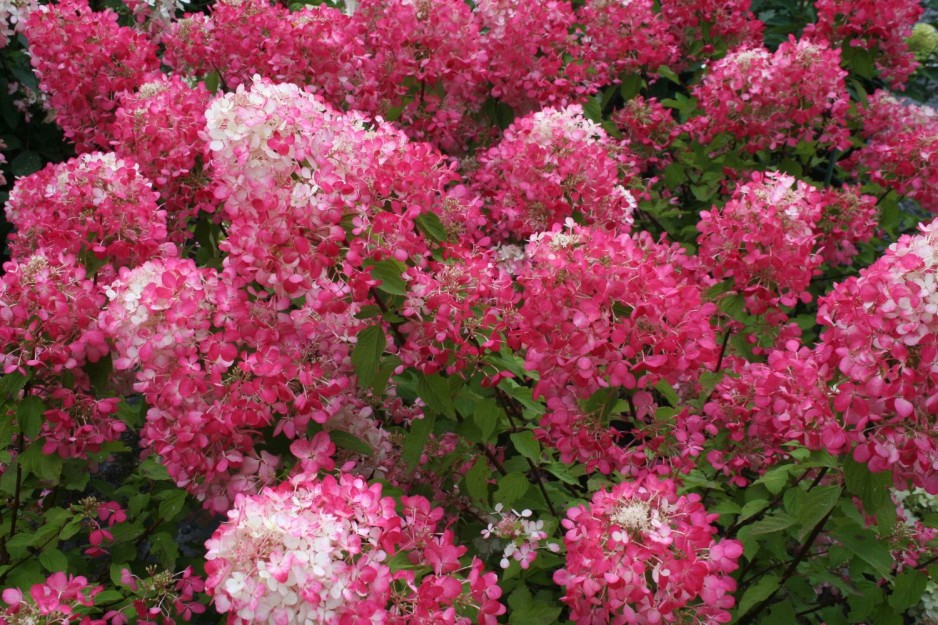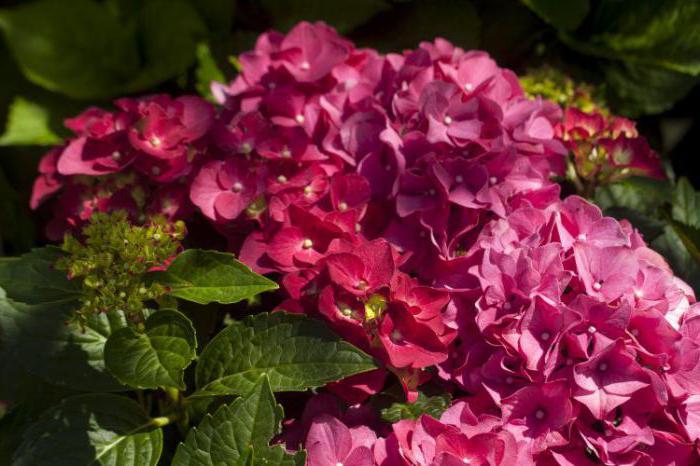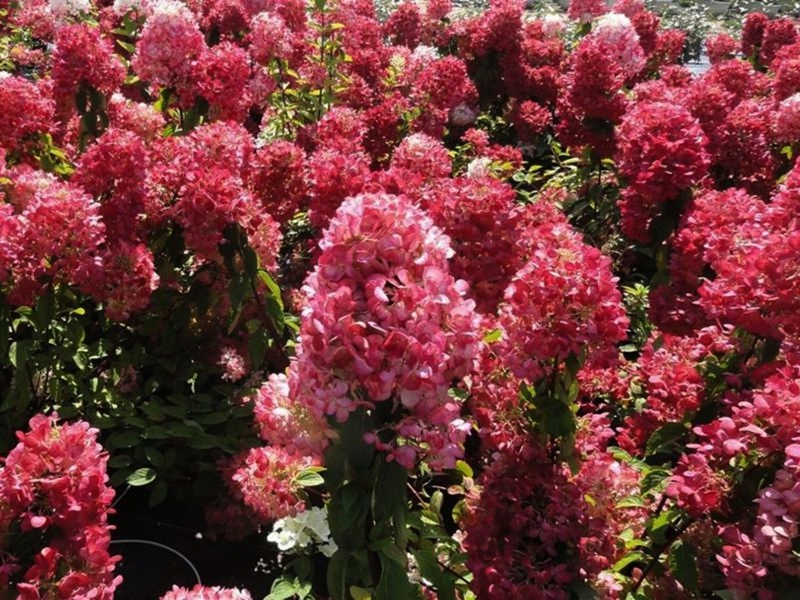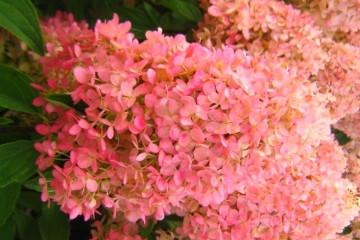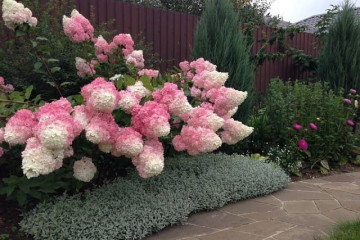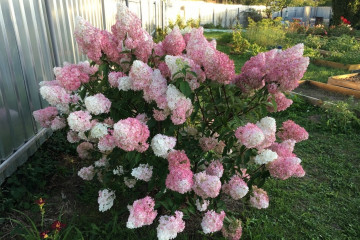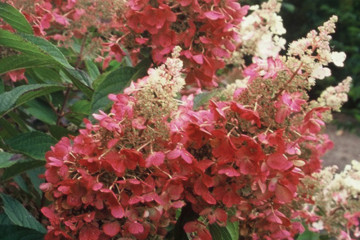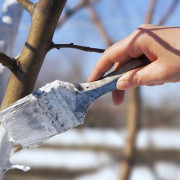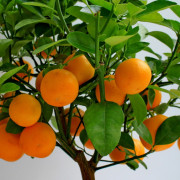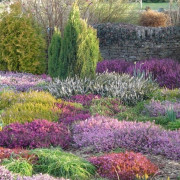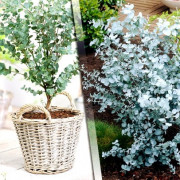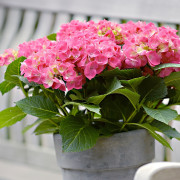Hydrangea Diamond Rouge (Hydrangea Paniculata Diamant Rouge) - description
Content:
Landscape designers and home gardeners often use different types of hydrangeas for landscaping, which are striking in their beauty. A new variety with increased resistance to unfavorable conditions has been developed in France. The Diamond Rouge panicle hydrangea has become a favorite of many flower growers, thanks to its luxurious flowers and easy care.
There are many varieties of hydrangeas, but this hybrid has a special place, both in its properties and in its exquisite beauty.
Origin and appearance
Among the numerous species, the panicle hydrangea diamant rouge occupies a special place. It was recently bred by French breeders and has since enjoyed great success at numerous exhibitions. One of the most beautiful views, which is confirmed by a large number of awards and medals. The new variety is frost-resistant and unpretentious. Its name translates as "red diamond".
This is a very beautiful shrub 1.5-2 m high. Its luxurious crown is covered with large red flowers and reaches 1.2-1.5 m. It blooms almost all summer, delighting with a variety of colors. The saturation of shades depends on the type of soil, climate, area.
Rouge hydrangea leaves are elongated with a velvety surface. They have unusual shades: from juicy green to orange-red, which makes the bush even more beautiful. The root system of the plant is wide and spreads close to the surface.
When describing the flowers of hydrangea diamond paniculata, first of all, it is necessary to mention their characteristic feature of changing color from white at the beginning of flowering to pink, and later bright red. Graceful flowers are collected in inflorescences in the form of panicles 30-40 cm long.
Transplant after purchase in open ground
Hydrangea seedlings are planted in open ground in early spring or autumn. This is the most favorable time. A seedling planted in the fall is sheltered from freezing.
A wide pit is prepared for planting, taking into account the surface location of the roots. The soil must be well fertilized.
Optimal location
The shrub grows well in illuminated areas and in partial shade, but the most beautiful inflorescences can be seen in places protected from direct sunlight. The plant loves loamy soil with weak or neutral acidity. You can acidify the soil by adding sawdust, peat, pine needles. Hydrangea is very fond of water. When choosing the optimal place, one must take into account the wide root system.
Step-by-step planting process
- Prepare a planting hole about 70 cm in diameter.
- Refuel with mineral and organic fertilizers.
- Moisten well.
- When planting, straighten the roots of the seedling.
- Fill the hole with earth and tamp.
Reproduction Diamond Rouge
Hydrangea reproduces by green cuttings and seeds. The only drawback is that the plant is under protection, which complicates the acquisition of planting material.
Cuttings
Cuttings for planting hydrangea diamant rouge are harvested from young shoots in early summer or in autumn from already lignified ones. Young cuttings with three pairs of buds are better accepted. A cut is made on the stem obliquely, while the lower bud should be 2 cm higher.The leaves are partially cut off, the lower ones are completely removed in order to delay the evaporation of moisture.
The cuttings are soaked in water, then treated with a growth stimulant. For rooting, they are placed in containers with a peat-sand mixture and covered with jars until the first roots appear.
Growing from seeds
Seed propagation is not the best way to grow Diamond hydrangeas. This is a laborious and time-consuming process. Small seeds sprout poorly, full-fledged bushes are formed only after four years.
Diamond Rouge Care
Watering mode
Hydrangea diamant roug is a moisture-loving plant, therefore regular watering is required for good growth and development of the root system, up to twice a week. For irrigation, it is better to use soft, settled water. It is also necessary to often loosen the soil and mulch with needles or peat.
Top dressing
From April to September, the shrub must be fertilized using different types of fertilizers:
- in spring - full complex fertilization;
- in summer - fertilizer with a low nitrogen content;
- in the fall - add potassium and phosphorus.
Mineral dressing is applied no more than once every ten days. Water-soluble fertilizers can be added to the water for irrigation. Diluted poultry droppings are used from organic matter. Diluted nettle infusion is useful for the growth of hydrangea.
During flowering
Hydrangea Diamant Rouge blooms 3-4 years after planting. The densely flowering shrub looks like a large red ball. Certain factors are important for long and abundant flowering:
- soil composition;
- moisture;
- shine.
The color saturation also depends on the chemical and physical composition of the soil. From the beginning of budding and for the entire subsequent flowering period, it is necessary to carry out mineral fertilizing three times. For abundant flowering, shoots are cut by 2/3. With careful care, the flowering will be especially lush. Without proper care, the plant may not bloom at all.
During the rest period
The hydrangea variety Diamant needs to be pruned annually. Then the shrub will wake up faster after hibernation, retain its decorative properties and flowering density. Cut off old branches and dried inflorescences. Spring pruning is carried out before bud break with obligatory feeding. Experienced gardeners leave quality shoots for future planting. It has been noticed that they take root well.
Old bushes rejuvenate by cutting off branches almost at the very ground. After two years, the bush completely regains its lush crown.
Preparing for winter
With good winter hardiness, hydrangea safely tolerates short-term frosts, but fragile bushes can suffer during severe cold weather, so they must be covered with special material or sprinkled with bark, straw, sawdust or spruce branches. Fertilizers are applied to prepare the roots for wintering.
Diseases and pests rarely affect the hydrangea. This is her undoubted advantage over other flowering plants. A luxurious shrub, with careful proper care, will decorate any area, create a magical atmosphere with its bright inflorescences.
To grow healthy and beautiful hydrangea bushes on your site, you need to purchase high-quality seedlings. It is better to do this in special nurseries that have proven themselves well. The editors of floricultural publications provide detailed information about the features of growing this beautiful plant.
